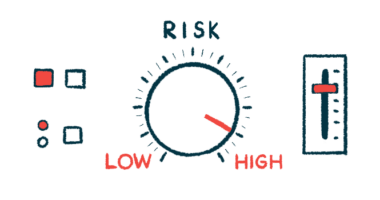Stem cell transplant is safe, effective in myeloma: Global real-world study
Treatment prolongs survival, delays cancer progression for most patients

A standard autologous hematopoietic stem cell transplant (AHSCT) safely and effectively prolongs survival and delays cancer progression in adults with multiple myeloma, a large, real-world international study indicates.
Disease relapse was reported in 15.7% in the first year after the transplant, and patients lived a median of 7.5 years and without signs of disease progression for a median of three years. Still, survival and relapse rates varied widely across regions due to differences in patient and disease characteristics, the use of maintenance therapy after transplant, and economic factors.
The study, “Global characteristics and outcomes of autologous hematopoietic stem cell transplantation for newly diagnosed multiple myeloma: A study of the worldwide network for blood and marrow transplantation (WBMT),” was published in the American Journal of Hematology.
In multiple myeloma, the excessive growth of a white blood cell type called plasma cells interferes with the production of blood cells in bone marrow, causing symptoms.
A standard myeloma treatment, AHSCT involves collecting a patient’s own healthy blood stem cells and eliminating all the body’s remaining blood cells through chemotherapy. Then, the stem cells are transplanted back so the blood can be repopulated with new and healthy blood cells.
Real-world global data on multiple myeloma transplant outcomes are scarce, however, leading an international team of researchers to retrospectively analyze data from 61,725 adults with newly diagnosed multiple myeloma who underwent AHSCT at 629 transplant centers between 2013 and 2017.
Real-world outcomes after stem cell transplants
Data were sourced from nine regional registries of the Worldwide Network for Blood Marrow Transplantation, including those from the U.S., Canada, Latin America, Europe, Australia and New Zealand, the Asian Pacific region, and the eastern Mediterranean region.
“This is the first time that real-world outcome data encompassing almost 60% of the world’s transplant activity have been reported in the field of [multiple myeloma],” the researchers wrote.
The study’s primary goal was to assess overall survival after AHSCT. Secondary measures included progression-free survival (PFS), which is the time a person lives without signs of disease progression, relapse rates, and mortality due to causes other than relapses, that is, non-relapse mortality.
Most patients underwent AHSCT when they were on very good partial remission (38%) or partial remission (36.2%). Complete remission was reported in about 1 in 5 patients (19.1%), followed by minimal remission/stable disease (4.7%), and relapse/progression (1.8%). Rates of very good partial remission or better ranged from 39% in Australia and New Zealand to 76% in Latin America.
Patients lived a median of 90.2 months, or about 7.5 years, and without signs of cancer progression for a median of 36.5 months, or about three years.
Two years after AHSCT, 88.4% of all patients were alive, and 64.6% had no signs of cancer progression. After six years, the overall survival rate fell to 63.4%, and PFS to 28.6%.
Overall survival after three years significantly varied across different regions, ranging from 68.6% to 84.3%, with the longest median survival in the U.S. and the shortest in Malaysia. Three-year PFS rates also showed significant regional differences, from 43.3% in Malaysia to 62.5% in Japan.
The relapse rate increased from 15.7% after a year to 33% after two years and 65.5% after six years. At the same time, the non-relapse mortality rate rose from 1.5% at one year to 2.5% at two years and 5.9% after six years.
Differences between regions
Measures also varied widely between regions, with Japan showing the lowest relapse rate (31.7%) and the highest non-relapse mortality (5.8%) after three years. The eastern Mediterranean region had the highest relapse rate (52.3%) and the lowest non-relapse mortality (2%).
Several factors were significantly associated with worse overall and progression-free survival, as well as higher relapse rates, after AHSCT, statistical analyses showed. The strongest were relapsed disease at the time of a transplant, followed by minimal remission/stable disease at AHSCT, and receiving no treatment after transplant.
“The risk of death was higher with more advanced disease at [AHSCT], underscoring the importance of utilizing a highly effective induction regimen at the outset to achieve the best response,” the researchers wrote.
More recently performed AHSCT was linked with better overall and progression-free survival, and lower relapse rates.mA status other than complete remission at the time of transplant was the strongest risk factor of non-relapse mortality. High-risk chromosomal abnormalities were also associated with worse outcomes.
Countries that spent more in health care performed significantly more transplants and the procedure was linked to a significantly lower risk of death or relapse.
“Worldwide data indicate that [AHSCT] in [multiple myeloma] is a safe and effective therapy with a [non-relapse mortality] of 1%-3% with considerable regional differences in [overall survival, relapse incidence], and patient characteristics,” the researchers wrote. “Maintenance treatment [post-AHSCT] had a beneficial effect on [overall survival].”







